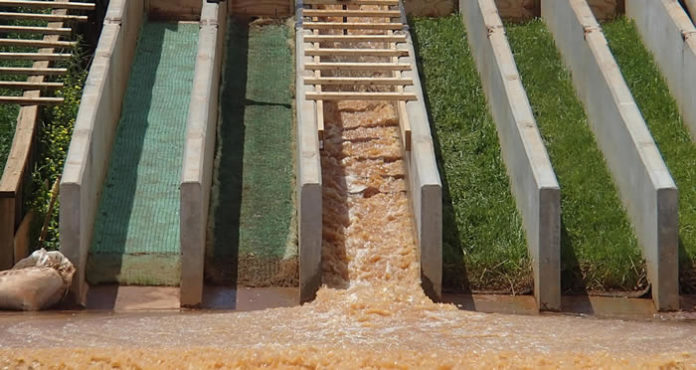By Joel Sprague and Jay Sprague – Controlling the migration of sediment is essential to the health of our waterways. Anywhere land is disturbed, such as in agricultural operations and construction, there is a risk of stormwater-induced sediment migration. Anywhere there is a sparsely vegetated or unvegetated surface exposed to runoff, there is a risk of erosion. These conditions impact levees, drainage channels, landfill caps, roadsides, and many other installations.
The erosion and sediment control industry offers a wide array of highly effective solutions here, by way of hydraulically-applied erosion control products (HECPs), rolled erosion control products (RECPs), various armoring systems, and a rapidly growing family of sediment retention devices (SRDs). Any of these solutions might be called a Best Management Practice (BMP), but they are not all interchangeable for a site’s specific needs nor do they perform identically from one product to another.
So how do we know which (so called) BMP is truly the “best” for our project? How do we determine which BMP best satisfies our project’s unique performance criteria for erosion and sediment control materials and, in so doing, minimizes the risk of sediment migration in stormwater runoff?
RELATED: Characterizing Sediment Retention Devices with ASTM Methods
Large-scale testing provides the data needed to select the appropriate and cost-effective products and systems to control erosion, manage sediment, and protect our waters and infrastructure.
ACCREDITED LARGE-SCALE TESTING
Since 2007, TRI Environmental has provided “real world” large-scale testing in erosion and sediment control that enables “apples-to-apples” comparison of BMPs. These state-of-the-art testing facilities were the first in the world to offer a comprehensive selection of standardized, third party, large-scale testing of erosion and sediment control materials; and, the outdoor laboratories were the first of their kind to receive GAI-LAP accreditation from the Geosynthetic Institute.

The South Carolina-based large-scale testing operation is the only independent commercial laboratory that offers such a wide array of performance testing capabilities, including ASTM standardized tests:
- ASTM D 6459: RECP Performance in Protecting Hillslopes from Rainfall-Induced Erosion
- ASTM D 6460: RECP Performance in Protecting Earthen Channels from Erosion
- ASTM D 7208: Temporary Ditch Check Performance in Protecting Earthen Channels
- ASTM D 7351: SRD Effectiveness in Sheet Flow Applications
We also offer non-standard large-scale testing to assist clients with product development and characterization. These services and testing options include:
- SRD effectiveness in inlet flow applications (D7351-modified)
- SRD effectiveness in construction perimeter control applications (TM11340)
- Pond skimmer evaluations and flow capacities
- Shoreline protection under wind-induced wave action
- Buried pipe and stormwater chamber strength/durability evaluations
- Large-scale germination and functional longevity testing of erosion control products
INDEPENDENCE & IMPACT
TRI is the contract lab for the National Transportation Product Evaluation Program’s (NTPEP) large-scale erosion control product testing for slopes and channels and sediment retention device testing. Additionally, TRI has performed large-scale testing for multiple state DOTs, environmental agencies, and dozens of leading, private companies.
Erosion and sediment control products and systems are engineered to meet the needs of our stormwater infrastructure. Large-scale testing provides the data that make your BMP selection better.
Joel Sprague and Jay Sprague work for TRI Environmental. For more information on the company’s large-scale testing services and facilities, visit www.erosiontest.com.












